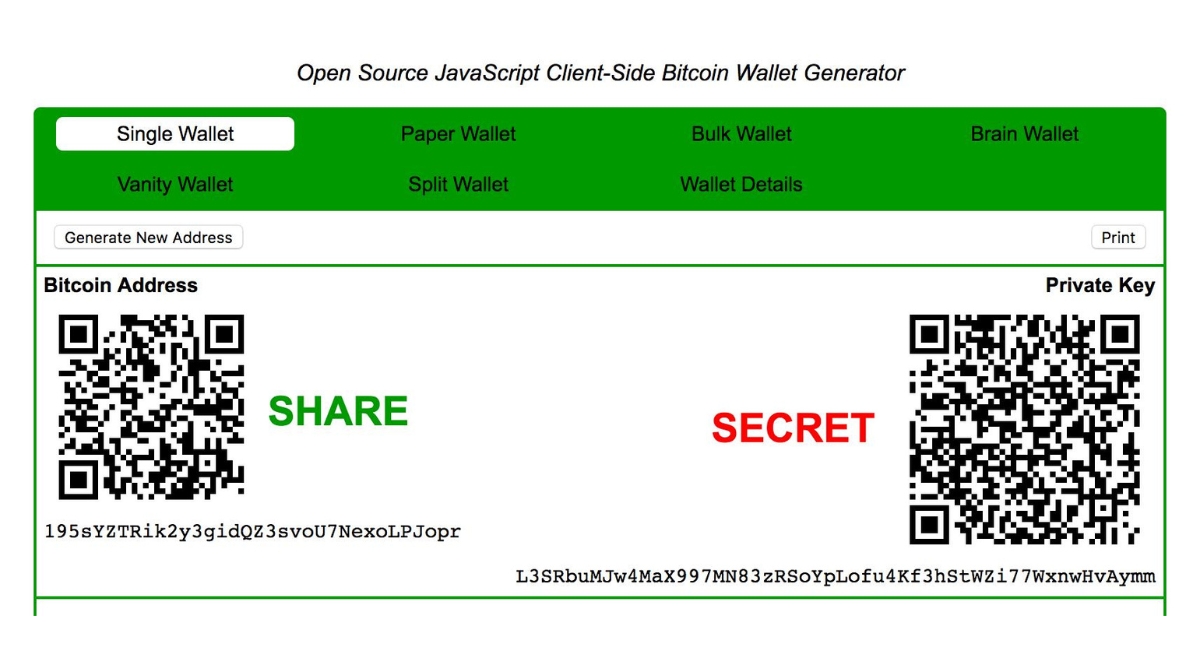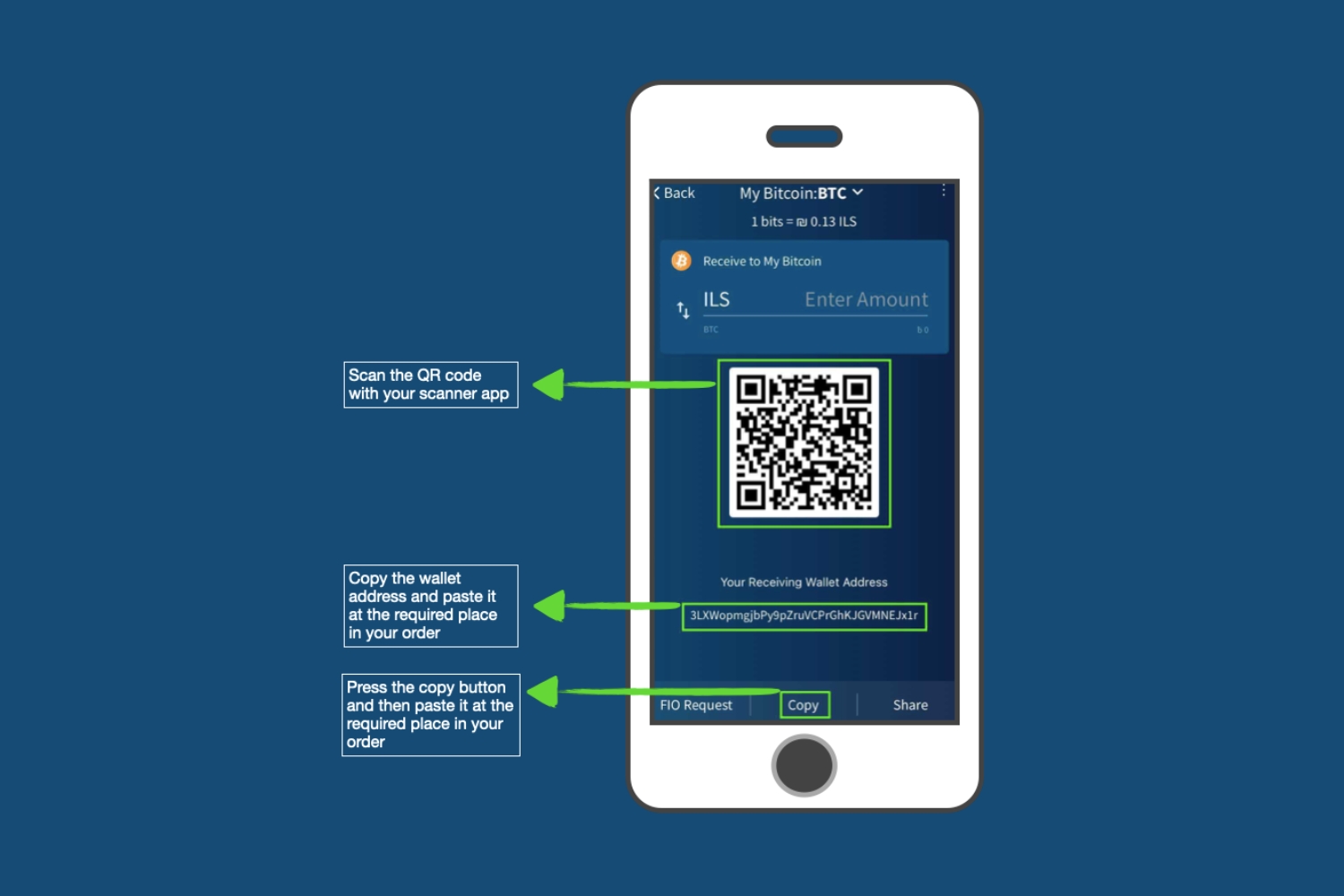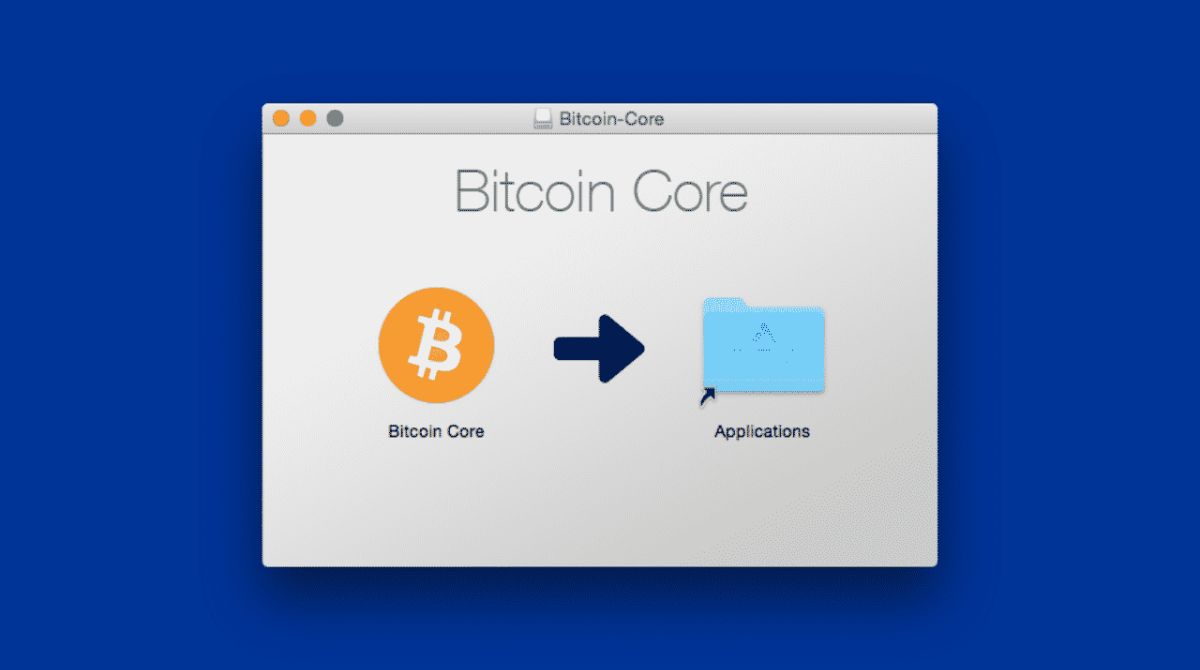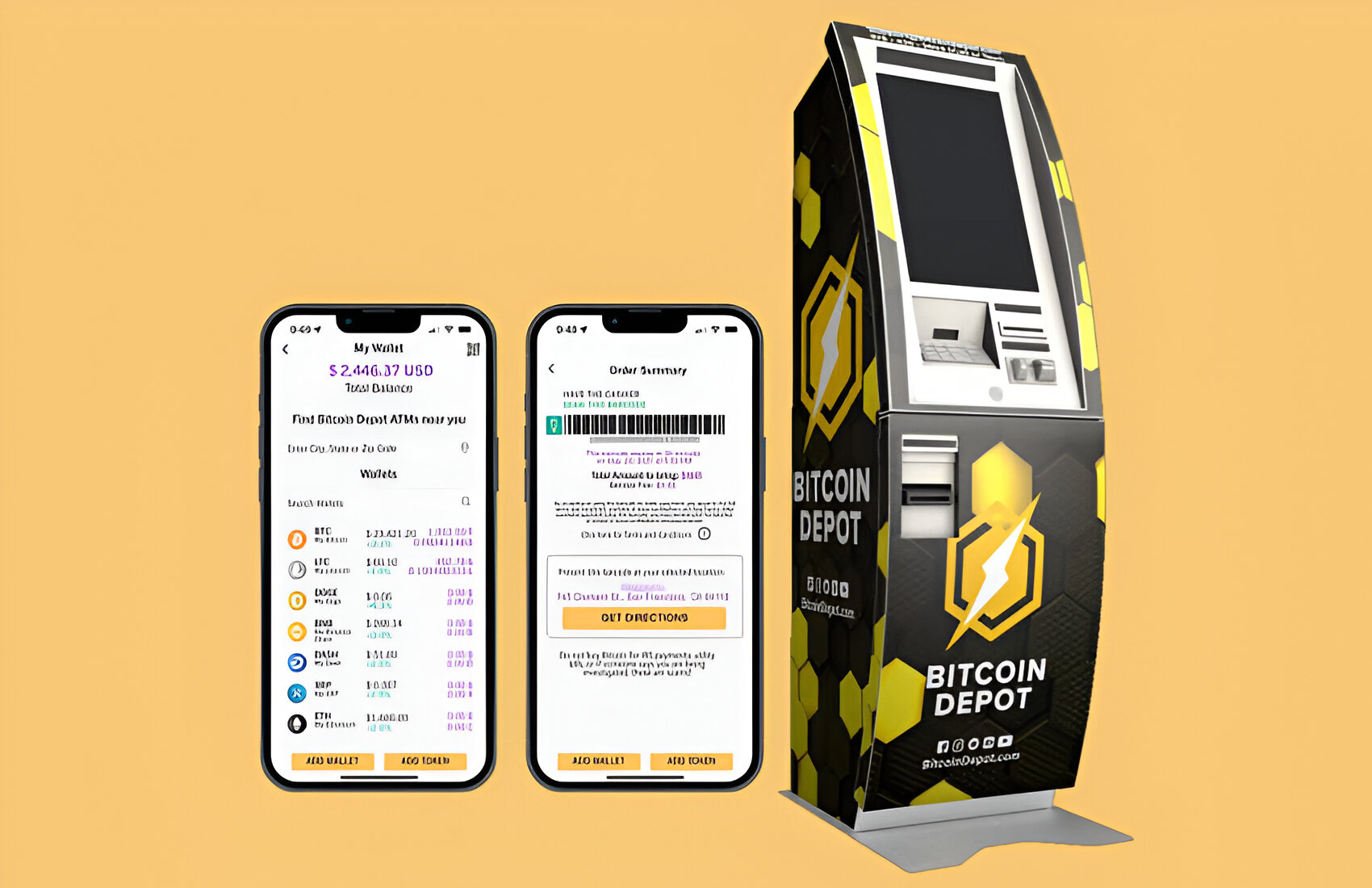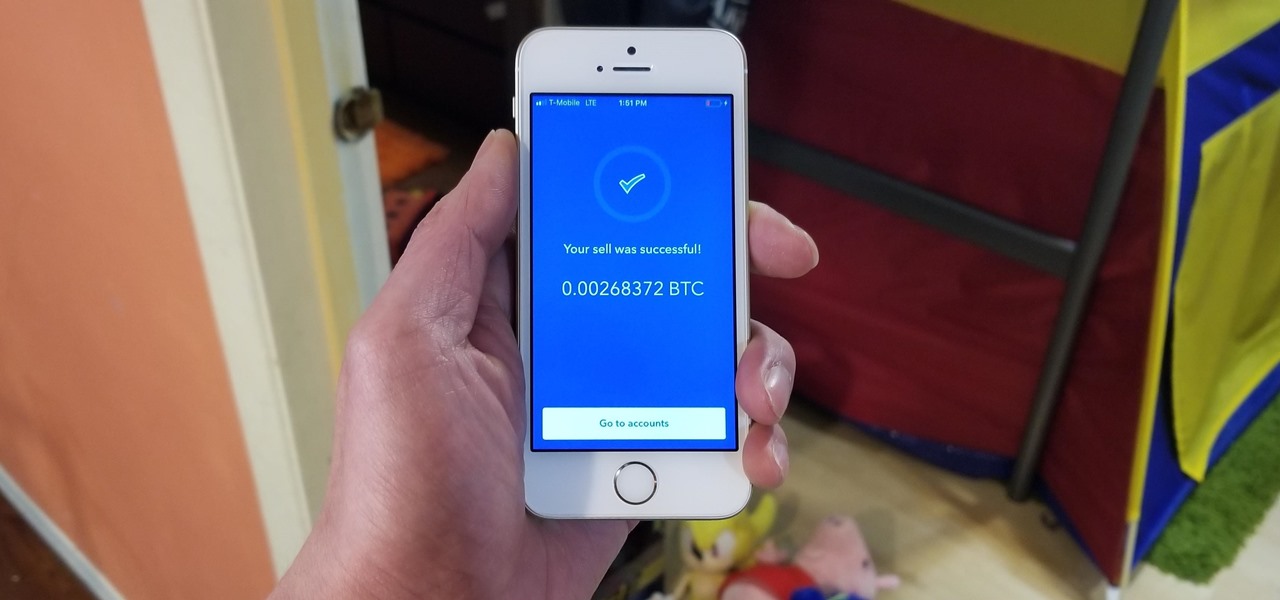What Is a Bitcoin Address?
A bitcoin address is a unique identifier that allows users to send and receive digital payments in the form of bitcoin. It functions similarly to a bank account number or an email address, but instead of being tied to a centralized institution or service provider, it is generated and controlled by the user.
Bitcoin addresses play a crucial role in facilitating transactions on the blockchain, which is the decentralized ledger that records all bitcoin transactions. Each address has a corresponding balance, which represents the amount of bitcoin associated with it. When someone wants to send bitcoin to another person, they need to know the recipient’s bitcoin address.
Bitcoin addresses are made up of a string of alphanumeric characters, typically starting with a “1” or “3”. The string is the result of a cryptographic algorithm applied to the user’s public key. This ensures that each address is unique and cannot be easily guessed or duplicated.
It is important to note that a bitcoin address does not contain any personal information about the user. It is designed to be pseudonymous, offering a level of privacy. However, the transactions made using a bitcoin address can be traced and analyzed on the blockchain, which has led to debates about the true extent of anonymity in the cryptocurrency world.
How Do Bitcoin Addresses Work?
Bitcoin addresses work through a combination of cryptographic techniques, specifically public key cryptography. When a user creates a bitcoin address, they generate a pair of cryptographic keys: a public key and a private key.
The public key is the part of the address that is shared with others when receiving payments. It is derived from the private key, but it cannot be used to retrieve the private key. This ensures that users can receive funds securely without revealing their private key, which grants access to their bitcoin holdings.
When someone wants to send bitcoin to a specific address, they create a transaction and include the recipient’s public key, along with their own public key and a digital signature. The digital signature is created using the sender’s private key, proving that they are the authorized owner of the bitcoin being spent.
Once a transaction is created, it is broadcasted to the network of computers, known as nodes, that maintain the blockchain. These nodes validate the transaction by verifying the digital signature and ensuring that the sender has sufficient funds in their address to complete the transaction.
After the transaction is confirmed by a sufficient number of nodes, it is added to a block along with other transactions. This block is then added to the blockchain, creating a permanent record of the transaction history. Every node in the network has a copy of the blockchain, ensuring transparency and security.
Bitcoin addresses are designed to be secure, but it is important to note that the private key must be kept secret and secure. If someone gains access to the private key, they can potentially steal the associated bitcoin. Therefore, it is crucial for users to store their private keys in a safe place, such as a hardware wallet or a secure digital vault.
Structure of a Bitcoin Address
A bitcoin address consists of a series of alphanumeric characters that serve as a unique identifier within the cryptocurrency network. Understanding the structure of a bitcoin address can help users identify and verify addresses when sending or receiving bitcoin.
The most common representation of a bitcoin address starts with a 1 or 3, followed by a string of characters. This is known as the Base58Check encoding, which is used to create a more human-readable and error-resistant form of the address.
The structure of a bitcoin address can be broken down into three main components:
- Version: The first character, either 1 or 3, represents the version of the address format. This helps distinguish between different types of addresses and their compatibility with various bitcoin protocols.
- Hash: The remaining characters are the result of a hash function applied to the user’s public key. This hash function helps ensure the uniqueness of the address and provides an added layer of security.
- Checksum: The last four characters of the address are a checksum derived from the previous two components. This checksum allows for error detection, preventing accidental mistyped or invalid addresses from being used.
The use of both the version and checksum in the bitcoin address structure adds an extra layer of validation and guards against typos or fraudulent addresses.
It is important to note that the structure of a bitcoin address can vary depending on the type of address being used. For example, there are addresses specific to certain protocols like Segregated Witness (SegWit) or Bech32 addresses, which have a different structure and provide additional features and efficiency improvements.
When sending or receiving bitcoin, it is crucial to double-check the accuracy of the address to prevent funds from being sent to the wrong recipient. Many wallet applications include address verification mechanisms to help users confirm the validity of the address before finalizing a transaction.
Understanding the structure of a bitcoin address is important for anyone interacting with the cryptocurrency. By familiarizing yourself with the components and ensuring the accuracy of addresses, you can safely manage and transact with bitcoin in the digital world.
Public Key and Private Key
In the world of cryptocurrency, specifically with Bitcoin, public key and private key pairs are integral to the security and functionality of the network. They form the basis of cryptographic processes that facilitate secure transactions and ownership verification.
A public key is a unique identifier that is derived from a user’s private key. It is generated through a complex mathematical algorithm, which ensures the uniqueness of each public key. Public keys are meant to be shared openly and are used to receive funds.
In contrast, a private key is a secret piece of information that should be kept confidential. It is used to sign transactions and prove ownership of bitcoins. By signing a transaction with their private key, users can ensure that their transaction is valid and cannot be tampered with by malicious actors.
The private key is the critical component that grants access to the funds associated with a particular public key. Losing or compromising the private key can result in the loss of those funds permanently. Therefore, it is essential to keep the private key secure and backed up properly.
Public and private keys are mathematically related, but it is computationally infeasible to derive the private key from the public key. This level of security is achieved through the use of asymmetric encryption algorithms, such as the Elliptic Curve Digital Signature Algorithm (ECDSA) used in Bitcoin.
When a user wants to send bitcoin from their address, they create a transaction and sign it with their private key. Then, they broadcast the transaction to the network, allowing nodes to verify the digital signature using the corresponding public key. If the signature is valid and the sender’s address has sufficient funds, the transaction is added to the blockchain.
Public and private key cryptography is a fundamental concept in Bitcoin’s security model. It ensures that only the intended recipient can access the funds and that transactions are tamper-proof once signed. By properly managing and safeguarding their private key, users can maintain control over their bitcoin holdings and engage in secure transactions on the blockchain.
Generating a Bitcoin Address
Generating a bitcoin address involves a series of cryptographic operations that create a unique identifier for receiving and sending bitcoin. The process typically involves the use of a wallet application, which provides the necessary tools and functionality to generate addresses securely.
When a user creates a new wallet, the wallet application generates a random private key. This private key is the cornerstone of address generation and should be kept secret and securely stored. From this private key, the wallet application derives the corresponding public key, which is then used to generate the bitcoin address.
Address generation begins with the hashing of the public key using a cryptographic hash function, such as SHA-256. This produces a hash value, which is then encoded in a specific format to create the final bitcoin address. The most common encoding scheme used is Base58Check, which ensures that the resulting address is easily readable and error-resistant.
It is important to note that each generated address is unique, as it is derived from a different private key. This ensures that there is no collision or conflict between addresses in the Bitcoin network.
Wallet applications often provide a seamless experience for users, making it easy to generate new addresses whenever needed. They typically handle the complexity of address generation behind the scenes, allowing users to focus on managing their bitcoin holdings and conducting transactions securely.
It is crucial to choose a reputable wallet application that implements robust security measures when generating addresses. This minimizes the risk of tampering or the exposure of private keys, which could lead to the loss of funds.
Some users may opt for more advanced methods of address generation, such as using hardware wallets or cold storage solutions. These methods provide additional layers of security by keeping the private key offline and away from potential online threats.
Generating a bitcoin address is a straightforward process facilitated by wallet applications. By understanding the underlying cryptographic operations and utilizing secure wallet solutions, users can create addresses for receiving and sending bitcoin with confidence and peace of mind.
Common Types of Bitcoin Addresses
Bitcoin addresses come in various formats, each serving different purposes and offering unique features. These different address types have evolved over time to improve transaction efficiency, reduce fees, and enhance privacy. Here are some of the most common types of bitcoin addresses:
- Legacy Addresses (P2PKH): Legacy addresses, also known as Pay-to-Public-Key-Hash (P2PKH) addresses, are the original and most widely used form of bitcoin addresses. They typically start with a “1” and are compatible with all bitcoin wallets and exchanges. While they provide basic functionality, they have lower transaction efficiency due to higher byte sizes and do not support advanced features.
- Segregated Witness (SegWit) Addresses (P2SH-P2WPKH): Segregated Witness addresses were introduced as an upgrade to the bitcoin network. They start with a “3” and are encoded as Pay-to-Witness-Public-Key-Hash (P2SH-P2WPKH) addresses. SegWit addresses offer smaller transaction sizes by separating the signature data from the transaction data. This reduces fees and improves scalability, making transactions faster and more cost-effective.
- Bech32 Addresses: Bech32 addresses are a newer type of bitcoin address format that starts with “bc1”. These addresses use the SegWit scripting language and offer enhanced error detection capabilities. Bech32 addresses are more efficient, resulting in lower transaction fees. They also improve the compatibility of bitcoin addresses with other cryptocurrencies that support the Bech32 format.
- Multi-signature Addresses (P2SH): Multi-signature addresses, also known as Pay-to-Script-Hash (P2SH) addresses, allow multiple parties to control the spending of funds. They start with a “3” and require the approval of multiple private keys to authorize a transaction. Multi-signature addresses provide increased security and can be used for shared wallets, escrow services, and business transactions.
- Non-Spendable Addresses: Non-spendable addresses are generated when a private key is lost or a wallet is no longer accessible. These addresses hold bitcoin but cannot be used to initiate transactions without the corresponding private key. Non-spendable addresses serve as a reminder to take extra precautions in backing up and securing private keys.
It is important to note that while different types of addresses offer unique features, they are all compatible within the bitcoin network. Users can freely transact between different types of addresses without any issues.
When sending or receiving bitcoin, it is necessary to select the appropriate address type based on the wallet or platform being used. Most wallets will automatically generate the recommended address type, but it is always good practice to verify address compatibility.
Understanding the different types of bitcoin addresses allows users to leverage the benefits of each format and choose the most suitable address type for their specific needs.
How to Use a Bitcoin Address
Using a bitcoin address is a straightforward process that involves sending and receiving bitcoin transactions. Whether you are receiving funds from someone or sending a payment, here are the steps to effectively use a bitcoin address:
- Receiving Bitcoin:
- Share your bitcoin address: To receive bitcoin, simply share your bitcoin address with the sender. You can find your bitcoin address in your wallet or exchange account. It is typically a string of alphanumeric characters starting with a “1” or “3”.
- Verify the address: Double-check the bitcoin address before sharing it to ensure accuracy. Even a minor typo can result in the loss of funds.
- Wait for the transaction confirmation: Once the sender initiates the transaction and broadcasts it to the bitcoin network, you must wait for the transaction to be confirmed by a sufficient number of nodes. This confirmation process confirms the transaction’s validity and adds it to the blockchain.
- Monitor your wallet for the transaction: Once the transaction is confirmed, the bitcoin you received will be reflected in your wallet balance. You can now use these funds for future transactions or store them securely for long-term holding.
- Sending Bitcoin:
- Obtain the recipient’s bitcoin address: To send bitcoin to someone, you need their bitcoin address. They will provide you with their address, which you can copy and paste or scan using a QR code.
- Verify the address: Double-check the recipient’s bitcoin address before initiating the transaction to ensure accuracy. Mistakenly sending bitcoin to the wrong address is irreversible.
- Create a transaction: In your wallet or exchange account, initiate a new transaction. Enter the recipient’s bitcoin address, input the amount you want to send, and include any additional information or notes if needed. Confirm the details of the transaction.
- Sign the transaction: Your wallet application will prompt you to sign the transaction using your private key. This process creates a digital signature that proves your ownership of the bitcoin being spent.
- Broadcast the transaction: Once the transaction is signed, your wallet application will broadcast it to the bitcoin network. It will be relayed to the network nodes for verification and inclusion in the blockchain.
- Transaction confirmation: Wait for the transaction to be confirmed by the network and added to the blockchain. This confirmation process typically takes a few minutes, but it can vary depending on network congestion.
- Transaction completion: Once the transaction is confirmed, the recipient will see the bitcoin in their wallet balance. The transaction is now complete, and the recipient can use the funds as desired.
Using a bitcoin address is a fundamental aspect of transacting with bitcoin. By ensuring the accuracy of the addresses and following the steps outlined above, users can send and receive bitcoin securely and efficiently.
Security of Bitcoin Addresses
The security of bitcoin addresses is of utmost importance as it directly impacts the safety of one’s funds. Here are key aspects to consider regarding the security of bitcoin addresses:
Private Key Security: The private key associated with a bitcoin address is crucial for accessing and controlling the funds. It must be kept secure and protected from unauthorized access. Users should never share their private keys with anyone and implement robust security measures, such as using hardware wallets or offline storage solutions, to safeguard their private keys.
Address Verification: It is essential to verify the accuracy of bitcoin addresses when sending or receiving funds. A single character error in an address can result in the loss of funds. Always double-check the entire address or use QR codes for reliable and error-free verification.
Wallet Security: Users should choose a reputable wallet provider with strong security measures in place. Look for wallets that offer features such as two-factor authentication (2FA), encryption, and regular software updates to protect against potential vulnerabilities.
Phishing Attacks: Beware of phishing attacks where malicious actors attempt to trick users into divulging their private keys or sensitive information. Be cautious when clicking on links or providing personal information related to your bitcoin addresses. Double-check the website’s URL and ensure that you are visiting legitimate sources.
Backup and Recovery: Regularly backup your wallet to prevent data loss. This involves securely storing a copy of the wallet’s private keys and recovery seeds (mnemonic phrases). In case of device loss, theft, or hardware failures, having a backup ensures that you can recover and restore your funds.
Offline Storage: Consider using cold storage or offline wallets for long-term storage of significant amounts of bitcoin. These wallets keep the private keys offline, reducing the risk of online attacks or unauthorized access. Hardware wallets, paper wallets, and other offline solutions provide an added layer of protection.
Third-Party Risks: Be cautious when using third-party services to handle your bitcoin addresses or transactions. Ensure that these platforms maintain high-security standards and have a strong reputation within the cryptocurrency community. It is recommended to conduct thorough research and read reviews before engaging with third-party services.
Regular Updates: Stay updated with the latest security practices and advancements in the field. Keep your wallet software and operating systems up to date to benefit from the latest security features and patches for any identified vulnerabilities.
Educate Yourself: Continually educate yourself about best practices and security measures in the cryptocurrency ecosystem. Stay informed about potential security threats, new scams, and emerging security technologies to enhance your understanding and protection of your bitcoin addresses.
By being proactive in addressing security risks and following recommended security practices, users can significantly enhance the protection of their bitcoin addresses and funds.
Backing Up and Restoring Bitcoin Addresses
Backing up and restoring bitcoin addresses is a crucial step in ensuring the security and accessibility of your funds. To protect against data loss, theft, or hardware failure, it is essential to create regular backups and have a plan for restoring your addresses. Here’s what you need to know:
Backup Methods:
1. Wallet Backup Files: Most wallet applications provide an option to create a backup file that contains your private keys or seed phrases. This file is encrypted, and you should store it in a secure location, such as an external hard drive or a USB drive. Make sure to use strong encryption and keep multiple copies in different physical locations for added security.
2. Mnemonic Phrases: Mnemonic phrases, also known as seed phrases, are a list of words that represent your private keys. These phrases can be used to restore your addresses in case of a lost or damaged wallet. Write down your mnemonic phrase on paper and store it in a safe place, away from unauthorized access and potential damage.
3. Hardware Wallets: Hardware wallets provide a secure way to store your private keys offline. Most hardware wallets have a built-in backup and recovery feature that guides you through creating a seed phrase. Make sure to follow the manufacturer’s instructions and keep your seed phrase safe and confidential.
Restoring Bitcoin Addresses:
1. Wallet Software: To restore your bitcoin addresses using a backup file or a mnemonic phrase, you typically need to download and install the same wallet software you were using before. Look for the “Restore” or “Import” option within the application and follow the instructions provided. Enter the backup file or mnemonic phrase when prompted and allow the software to synchronize and retrieve your addresses.
2. Hardware Wallets: If you are restoring addresses from a hardware wallet, follow the manufacturer’s instructions to connect your device and open the compatible wallet software. Look for the option to restore or import addresses, and input your mnemonic phrase when prompted. The software will retrieve and display your addresses from the hardware wallet.
3. Wallet Recovery Services: If you have lost access to your backup files or mnemonic phrases, some wallet recovery services may be able to assist you. However, be cautious when using recovery services and ensure their legitimacy, as this involves sharing sensitive information with third parties.
Regardless of the method used to backup and restore your addresses, it is crucial to periodically test the restoration process to ensure that your backups are valid and can be successfully restored. This practice provides peace of mind and ensures that you can recover access to your funds when needed.
Remember, the security of your backup files and mnemonic phrases is paramount. Keep them in secure locations, protect them from unauthorized access, and regularly update your backups as you generate new addresses or make changes to your wallet.
By following proper backup and restoration procedures, you can safeguard your bitcoin addresses and ensure that you can regain access to your funds in the event of a loss or unforeseen circumstance.
Conclusion
Bitcoin addresses are the backbone of the cryptocurrency’s transaction system, allowing users to send and receive funds securely on the blockchain. Understanding how to generate, use, and secure bitcoin addresses is essential for anyone venturing into the world of Bitcoin.
In this article, we explored the concept of bitcoin addresses, their structure, and the role of public and private keys in securing transactions. We discussed the different types of bitcoin addresses and their respective benefits, such as legacy addresses, Segregated Witness addresses, and multi-signature addresses.
We also highlighted the importance of security when it comes to bitcoin addresses. We emphasized the need to protect private keys, verify address accuracy, and stay vigilant against phishing attacks and other forms of online threats. Additionally, we discussed the significance of regularly backing up and restoring bitcoin addresses to prevent data loss and ensure access to funds.
By following best practices, such as using reputable wallet software, keeping private keys secure, performing regular backups, and practicing good address verification habits, users can enhance the security and integrity of their bitcoin addresses.
It is essential to stay informed about the latest developments in bitcoin address security and maintain awareness of potential risks and scams. Continuous learning and adapting to new security measures will help users navigate the ever-evolving landscape of cryptocurrency safely.
With a solid understanding of bitcoin addresses and their security, users can confidently engage in transactions, send and receive funds, and fully embrace the decentralized and innovative nature of Bitcoin.







